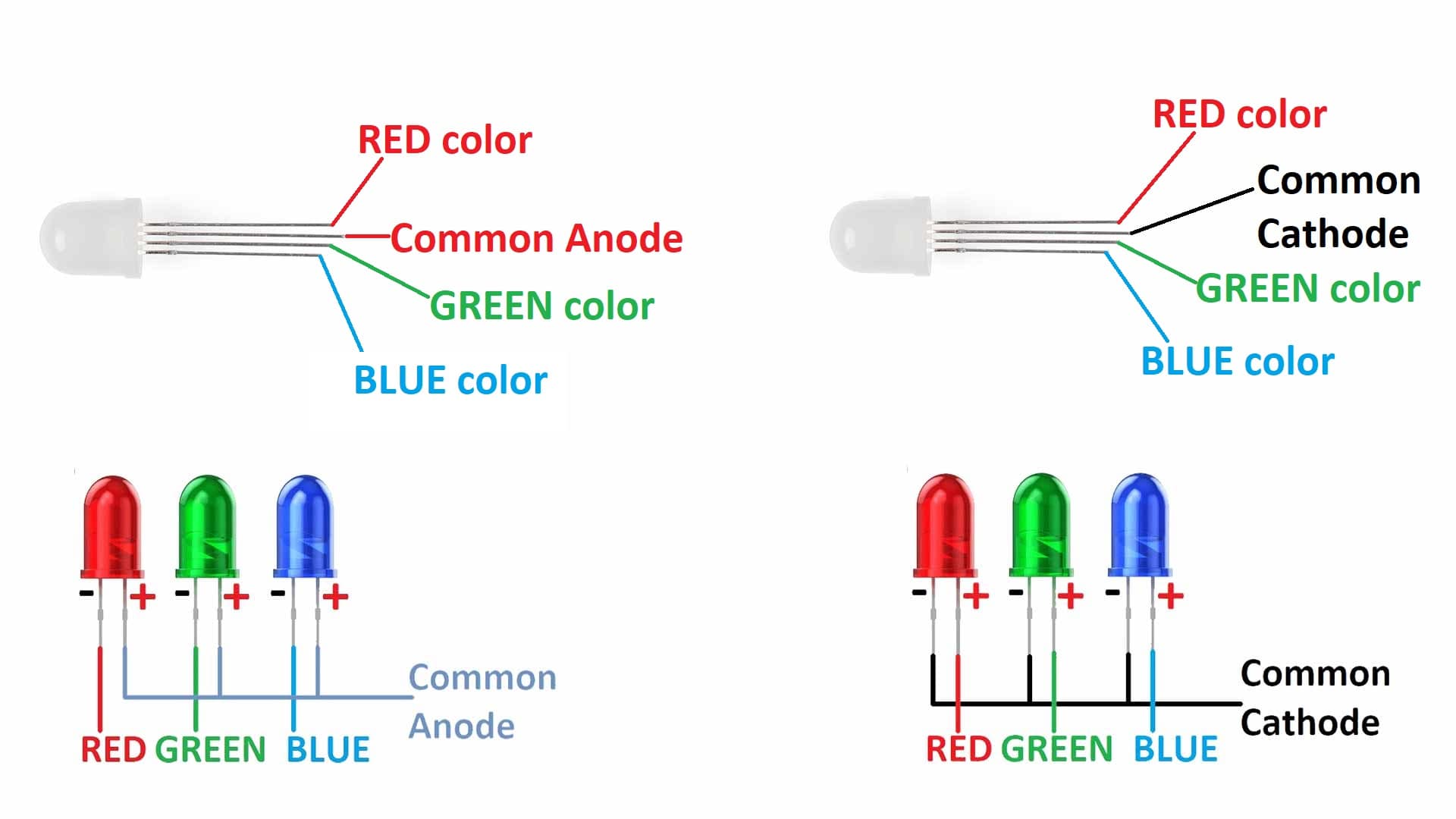

” How to use a RGB LED with Arduino | Tutorial.” How to Mechatronics. Grumpy_Mike (2010, October 20). Re: RGB LED Common Cathode versus Common Anode.

The results:Ĭheck out a simulation of this project on AutoDesk 123D circuits. This concept is repeated for other color transitions. As it does that, the LED will cycle through all the possible color combinations, giving off the color changing effect.Īs the RGB LED transitions from green to red, the pin value decreases for green and increases for red while blue stays 0 (OFF). The logic behind this sketch is that the LED will transition from green to red, then to blue and back to green. ino file can be found on GitHub as RGB_LED.ino.
#Common cathode rgb led code#
Before uploading code enter your SSID and Password. RGB LED Connections with Node MCU NodeMCU RGB LED Controller Arduino IDE Code. You will need:Ģ20 ohm resistors How you hook it up: RGB LED connected to an Arduino Uno. RGB LED is Common Cathode(GND) type, its common terminal is connected to NodeMCU GND Pin and R, G, B connections are made with NodeMCU using 220 Ohm Resistor at D6, D7 and D8. For this project, we will use the common cathode. Get it Thursday, May 26 - Wednesday, Jun 8. For the common cathode RGB LED, one will connect the cathode to GND and the remaining pins to resistors and output pins (Grumpy_Mike, 2010). 10PCS 5mm RGB LED Common Cathode Anode Tri-Color 4pin Red Green Blue LED Emitting Diodes f5 RGB Diffused Transparent Lamp (Common Anode Diffused) £2.00. For the common anode RGB LED, one will connect the anode to a 5V source and the remaining pins to resistors and output pins. In both LEDs, the longer pin sticking out represents the common anode or cathode. The red, blue and green diodes are represented by R,G and B respectively. There are 2 types of RGB LED: (1) common anode RGB LED and (2) common cathode RGB LED where the three diodes are connected to a “shared” terminal be it positive or negative. By tinkering how much red, green and blue to be added to the palette, we end up with 256*256*256= 16,777,216 different colors ( not all perceive by the human eye of course). Remember how we can use analogWrite() to control how much voltage delivered to a pin? The values 0-255 correspond to 256 different voltage levels delivered to an LED and this will result in 256 different magnitudes of red, green and blue. These 3 colors alone are able to produce around 16 million different colors thanks to PWM and the laws of permutation. RGB LEDs house 3 different color-emitting diodes (red, blue and green) and they combine these 3 colors to produce a spectrum of vibrant hues. RGB LED stands for red, green and blue LED. This time around, we will do the same thing but with an RGB LED. Last time we talked about fading an LED and how it is achieved by PWM.


 0 kommentar(er)
0 kommentar(er)
